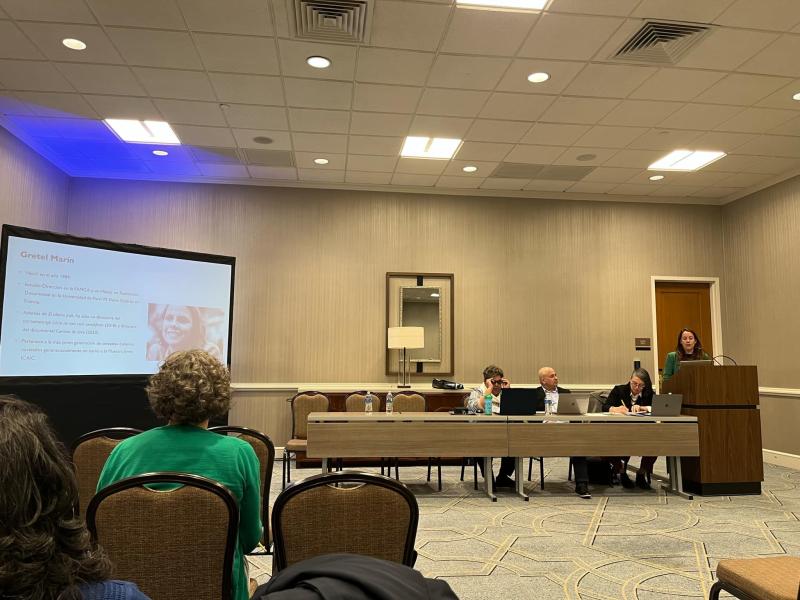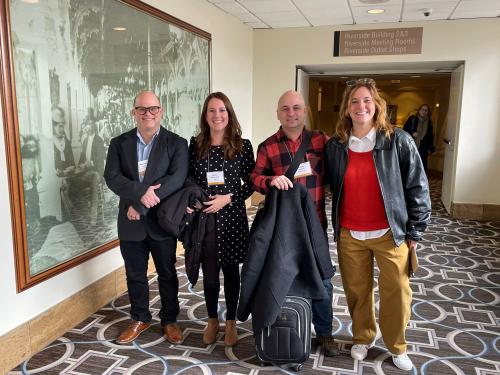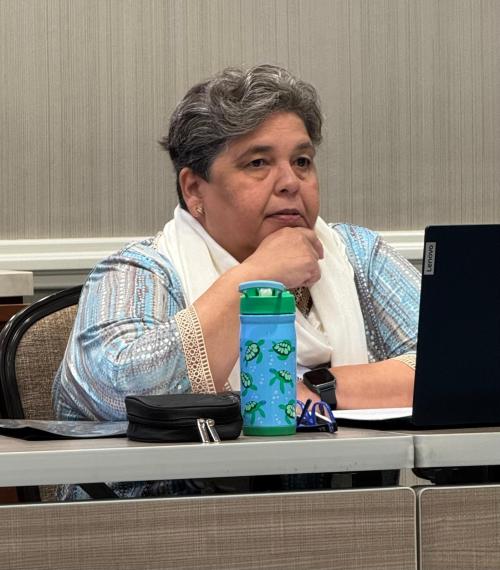Latin American Studies at the MLA 2025 Convention

New Orleans was the host of the 2025 Modern Language Association (MLA) Annual Convention on January 9th to 12th. This prestigious conference brought together scholars, researchers, and students to engage in critical conversations on language, literature, and cultural studies.
The Stone Center for Latin American Studies and Tulane University were well represented at the MLA 2025 Convention, with faculty and students actively participating in panels and discussions. Congratulations to Stone Center’s faculty members who participated at the conference: Marilyn Miller (Presentation: “A Monument to the Confederacy? South-South Affinities in José Martí’s Portrait of Judah Benjamin”); Megwen Loveless (Presentation: “Addressing EDI Concerns in the Language Classroom through OER Initiatives”); Cheryl Naruse (Session respondent: Postcolonial Capitalism: Southeast Asia and Its Diaspora); Zorimar Rivera Montes (Presentation: “Against Resilience: Laziness as Refusal;” Session respondent: Affective Economies of the [Greater] Caribbean); Christopher Rodning (Presentation: "Rhetoric and Reciprocity: East Carolina University’s Neyuheruke Wampum”); and Chelsea Stieber (Panel: Migrations and Diasporas).
We especially congratulate Latin American Studies PhD students Isdanny Morales Sosa and María Caridad Cumaná, who did a fantastic job presenting in the panel "Cuban Time Scales: Exploring Postmodern and Postrevolutionary Cultural Forms." This panel was part of the "Cuban and Cuban Diasporic Forum MLA 2025,” organized by Maybel Mesa Morales (Lycoming College) and Katerina Gonzalez Seligmann (UConn). Read the titles and abstracts of their papers below.

"El cine de los nietos: revolución, agotamiento y posmemoria en El último país (Gretel Marín, 2017)" by Isdanny Morales Sosa.
Abstract: In this presentation, I analyzed the documentary El último país (2017) by Gretel Marín as part of what I call “the Cuban cinema of the grandchildren.” As I explained, this “cinema of the grandchildren” refers, first and foremost, to the generational distance marked in this film by those born from the 1980s onward, in relation to the experiences and expectations of their grandparents concerning the Cuban Revolution. However, it is also defined by the distance this same generation establishes with the modes of production that characterize the canon of Cuban cinema. I refer to those works centered around ICAIC (Cuban Institute of Cinematographic Art and Industry) as the governing institution of national cinema, the first institution, in fact, founded by the Revolution. As also occurs in El último país, in the films of this generation, metaphorically also the grandchildren of ICAIC’s founders, this institution is rarely their main production house. Instead, their works are often produced by independent companies outside the state institution or even by international production houses. These films have limited presence in national movie theaters, often because they are censored. They are typically showcased at international film festivals or on streaming platforms, which they access through their own efforts and the opportunities brought by the arrival of the internet in Cuba, followed by their migration to other countries. In summary, the term “cinema of the grandchildren,” under which I analyzed El último país by Gretel Marín, refers to this new generation of Cuban filmmakers who, to varying degrees, adopt a distant and critical stance toward the past they have inherited, one in which they struggle to recognize and locate themselves as a generation.

"Exploring Temporal Contrasts in Nicolás Guillén Landrián’s Cinema through the Lens of 'Landrián' (2023) by Ernesto Daranas Serrano" by María Caridad Cumaná
Abstract: Nicolás Guillćn Landrián’s cinematic works offer a nuanced examination of the Cuban Revolution’s political and ideological complexities. Produced during the 1960s and early 1970s, Landrián’s documentaries challenged the sanctioned narrative of the Cuban Institute of Art and Cinematographic Industries (ICAIC), resulting in his expulsion and a thirty-year censorship of his work. A significant retrospective organized by the Cinemateca de Cuba in 1999 reintroduced Landrián’s films to the public eye, sparking renewed interest and scholarly inquiry. Subsequent documentaries such as “Cafć con leche” (2003) by Manuel Zayas and “Retornar a La Habana con Guillćn Landrián” (2013 by Julio Ramos and Raydel Araoz further examined Landrián’s oeuvre. Recently, “Landrián” (2023) by Ernesto Daranas has continued this exploration. As digital technologies redefine filmmaking practices, there’s a need to reassess film studies, traditionally grounded in analog formats. This paper proposes an investigation into the integration of analog aesthetics within the digital realm, particularly focusing on the affective potential of visual effects technologies in artistic expression. Drawing upon Steven Shaviro’s theory of post-cinematic affect, which delves into the evolving landscape of moving images in the digital age, this research seeks to illuminate how Landrián’s analog legacy intersects with contemporary digital filmmaking practices.
